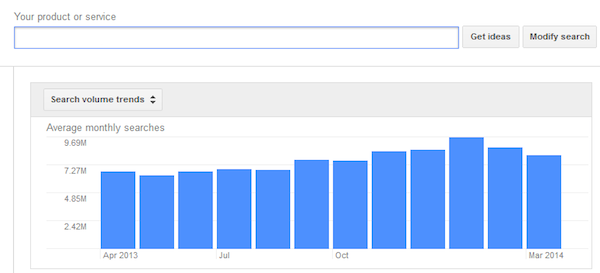Search Volume in SEO – Here’s all you need to know

Essential SEO Schema markups and Rich snippets for your website with examples
January 31, 2019
Why SEO is considered bad in India (Part-2)
February 8, 2019Q) What is Search Volume?
A) The term ‘Search Volume’ refers to the number of searches made for a given keyword in a given time-period (usually a month) on a given search engine (like Google). It is a number that is often used to quantify the maximum possible traffic that can be achieved by optimizing the given page for the keyword in consideration.
Q) What are LSV and GSV?
A) LSV stands for Local Search Volume. It is the search volume for a given location, like city, state or country. GSV refers to the Global Search Volume, i.e. total search volume from all over the world. It is also possible to add a list of specific locations for which we need the total LSV.
NOTE: If LSV = GSV, it means that the term is searched only by users of that particular locality.
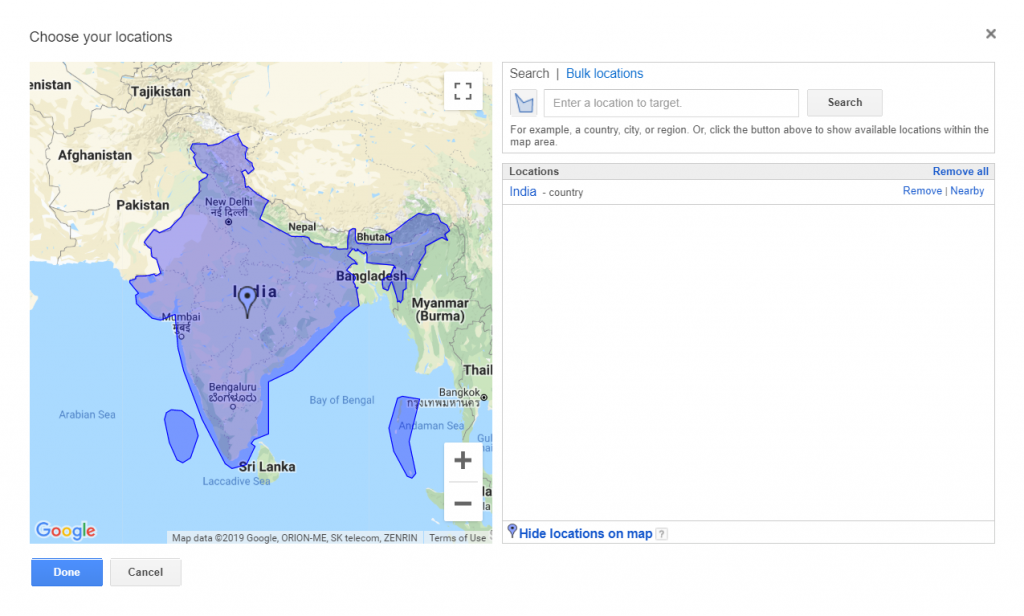
Q) How does search volume help in selecting keywords for a campaign?
A) Search Volume is often used as a metric to select the keywords. Those who aim for higher visibility naturally select keywords of higher search volume, whereas those operating in niche domains tend to prefer low-searched and long-tail keywords. The latter technique works because CTR increases with increase in narrowness of the field, thereby compensating for the low value of search volume.
Q) How does Search Volume help in estimating organic traffic?
A) Search Volume assists in the calculation of organic traffic by acting as a rough replacement for Impressions:
- Search Volume gives the total number of searches made in the month for the keyword.
- Depending on the estimated rank of the given page, the CTR of that page would vary. Higher the rank, better the CTR.
- The search volume, multiplied with the CTR, gives us the estimated organic traffic for that page in that month.
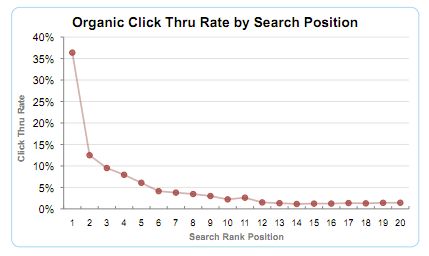
Q) What are some sources by which Search Volume can be obtained?
A) Search Volume can be obtained in 3 ways:
- Keyword Planners provided by Search Engines like Google, Bing, etc.
- Third-party tools
- APIs that fetch data from the above keyword tools
Q) Are search engines not naturally more accurate in the display of search volumes than third-party tools?
A) No, search engines are not necessarily more accurate. At Diet SEO, we have observed both cases, of third-party tools outperforming Google Keyword Planner in some cases and clearly lagging in others.
Q) How does Google display Search Volumes?
A) Search Volume for a keyword for a given month is calculated by taking the average of the keyword’s search volumes from the last 12 months by default.
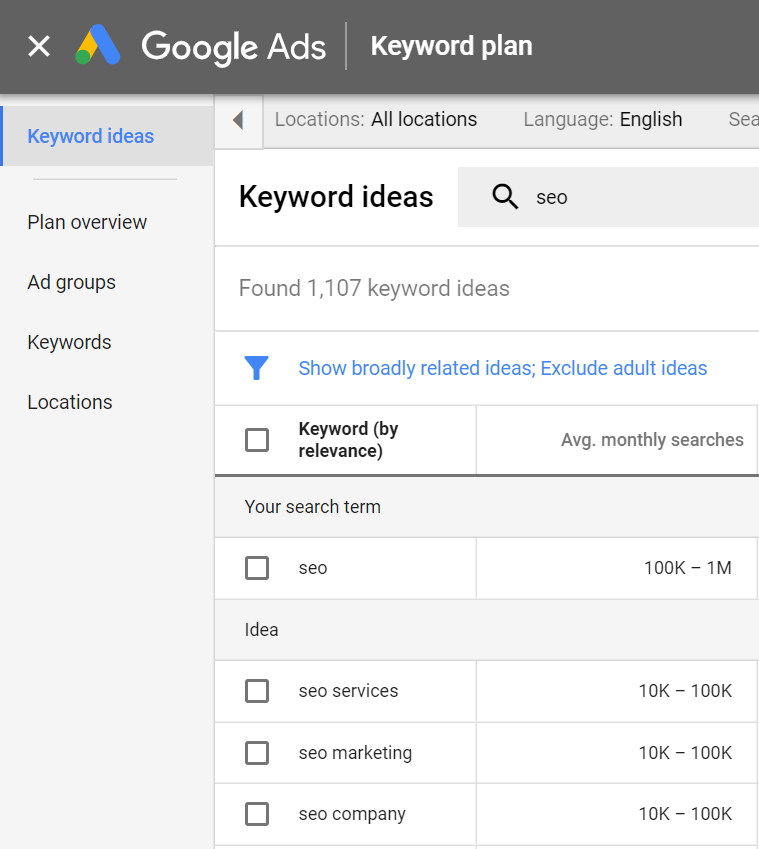
Q) How accurate is Google’s Search Volume?
A) Google’s Search Volumes are of varying accuracies. This is because of the Search Volume that it displays is not an actual number, but the ceiled value of the average of previous ceilings.
Q) How to interpret Google’s Search Volume Ranges?
A) The value shown on Google Keyword Planner is either a range or an exact number, depending on your monthly spend on Adwords campaigns. Ranges give a fairly good picture when the numbers are small, but for large numbers, they tend to be inaccurate. For example, a Search Volume of 20,000 could be shown as “10,000 to 100,000”, the average of which is 2.5 times of the actual value. Thus, although taking the average is the best way as of today, it is not necessarily accurate.
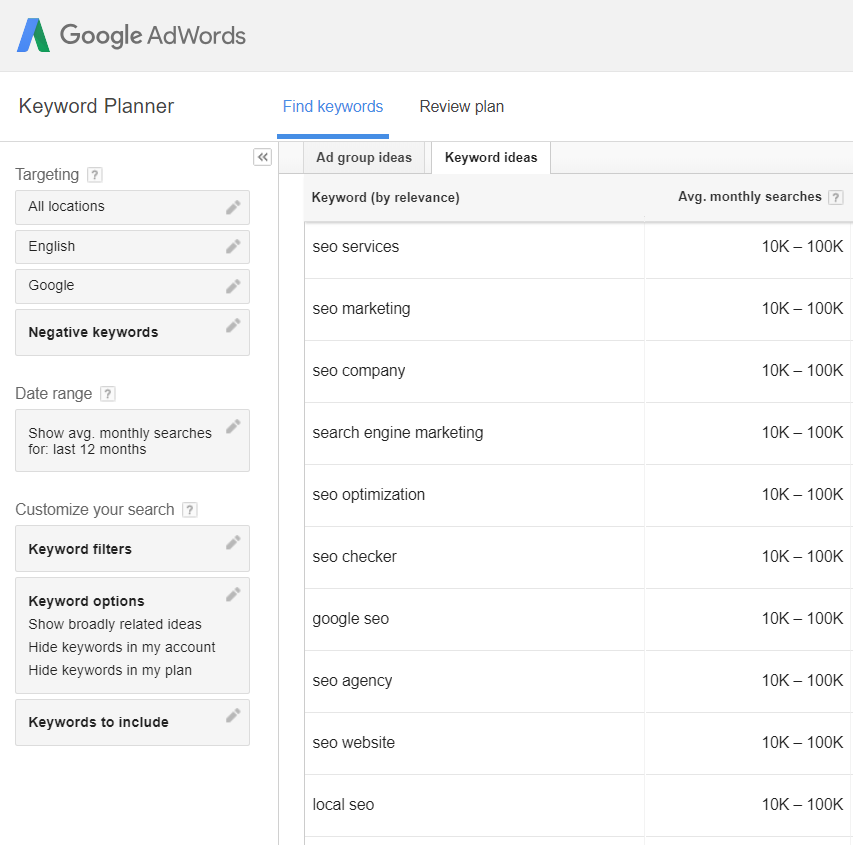
Q) How to interpret Google’s Search Volumes given in exact numbers?
A) As Google uses the ceiling function, its results can take only fixed values. For instance, it would never tell you that your Keyword’s search volume is 49,718 but would show 50,000 instead. Thus,
- When the planner shows the result as 10, the actual value could be anywhere between 1 to 10.
- When the planner is known to take two different values, but not any value in between, eg.: if it shows 8,100 for one keyword and 8,500 for another, but no value in between for any keyword, we could safely infer that whenever it says 8,500, it means any number between 8,101 and 8,500.
Q) What does a varying search volume imply?
A) Despite the high level of inaccuracy brought in due to the ceiling function, the increase in the exact value of search volume displayed by Google’s Keyword Planner is always directly proportional to the increase in the actual search volume of the keyword within reasonable confidence intervals.

Q) What does a varying search volume range imply?
A) Let us represent the lower limit of search volume as L and upper limit as H. When the search volume range changes, let it change from (L1,H1) to (L2,H2).
Eg.: When 0-10 becomes 100-1000, L1 = 0, H1 = 10, L2 = 100, and H2 = 1000.
As already explained, the standard practice is to take the average of the lower and upper limits of the search volume range that is displayed by the Keyword Planner. Thus, in month 1, the assumed search volume is (L1+H1)/2, and in the next month, it is (L2+H2)/2. But this technique turns out to be inaccurate – in our example, the first month’s average comes out as 50, and the second month’s average as 500. But if the actual variation was from 10 to 110, we’d be misunderstanding the tiny change of 100 searches to a large 450. This is a whooping error percentage of 350%! Thus, the correct way is to keep observing search volume trends and using historic values to the best effect.
Q) How do we increase the accuracy of our search estimate by using search volume ranges of two consecutive months?
A) When there is a change in the number of searches, it is either positive or negative.
CASE 1:
Let us consider a case where there is a positive change, i.e. the search volume increases. Thus, we have (L1,H1) increasing to (L2,H2). This means the following:
- L2 is greater than or equal to H1
- The search volume was most probably considerably closer to H1 than L1 to begin with, and is now much closer to L2 than H2. In other words, a more accurate estimate for the search volume than L1, H1, L2, H2, (L1+H1)/2 and (L2+H2)/2 is (H1+L2)/2.
In our previous example, we had H1 = 10 and L2 = 100. Thus, the average search volume is (10+100)/2 = 55. Now, there is one final rule – If the average estimate is less than L2, increase it to L2. In our case, the estimate, 55, is less than L2, 100. So, we raise it to 100.
Thus, if a search volume of 0-10 becomes 100-1000 in one month, we assume the new search volume to be 100.
CASE 2:
This is a case where the change is negative, i.e. the search volume decreases. Thus, we have (L1, H1) decreasing to (L2, H2). This means:
- L2 < H2 <= L1 < H1
- The search volume was most probably considerably closer to L1 than H1 to begin with, and is now much closer to H2 than L2. In other words, our more accurate estimate would be (L1+H2)/2.
To understand this, let us assume that a search range of 100-1000 becomes 1-10 in a single month. Therefore, we have L1 = 100, H1 = 1000, L2 = 0, H2 = 10, and our estimate is calculated as (100+10)/2 = 55. Now, there is one final rule – If the estimated average search volume is greater than H2, decrease it to H2. In our case, the estimate, 55, is more than H2, 10. So, we drop it to 10.
Thus, if a search volume of 100-1000 becomes 0-10 in one month, we assume the new search volume to be 10.
Q) Is such a tedious calculation really necessary?
A) The calculation is not all that tedious if you observe the Keyword Planner frequently and note down which numbers it displays. However, Search Volume as a metric has limited use, because:
- It is subject to variation.
- At no point of time is there a static correlation between search volume and organic traffic.
- When present in ranges, the range of values is not equally distributed in terms of probability.
Note that this averaging is applicable only to Google Keyword Planner. Bing, for instance, doesn’t average at all, and gives historical data for 6 months. Unfortunately, Google beats Bing in user-base.
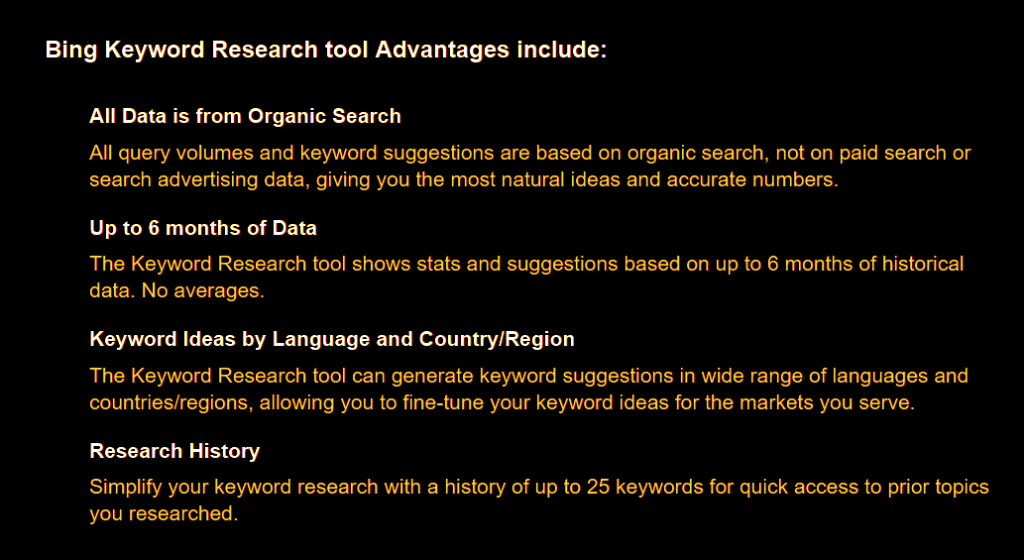
Q) Is there an alternative to search volume as a metric in SEO?
A) Yes. At Diet SEO, we suggest that you go for relevance of the keyword over the search volume. The number of people seeing your page can be found through Impressions on tools like Google Search Console, and as long as there is a good, relevant traffic, the SEO efforts would pay off.
To know more about how you can use keywords and keyword-related metrics to improve your performance, and to get a free SEO audit, contact us now!

